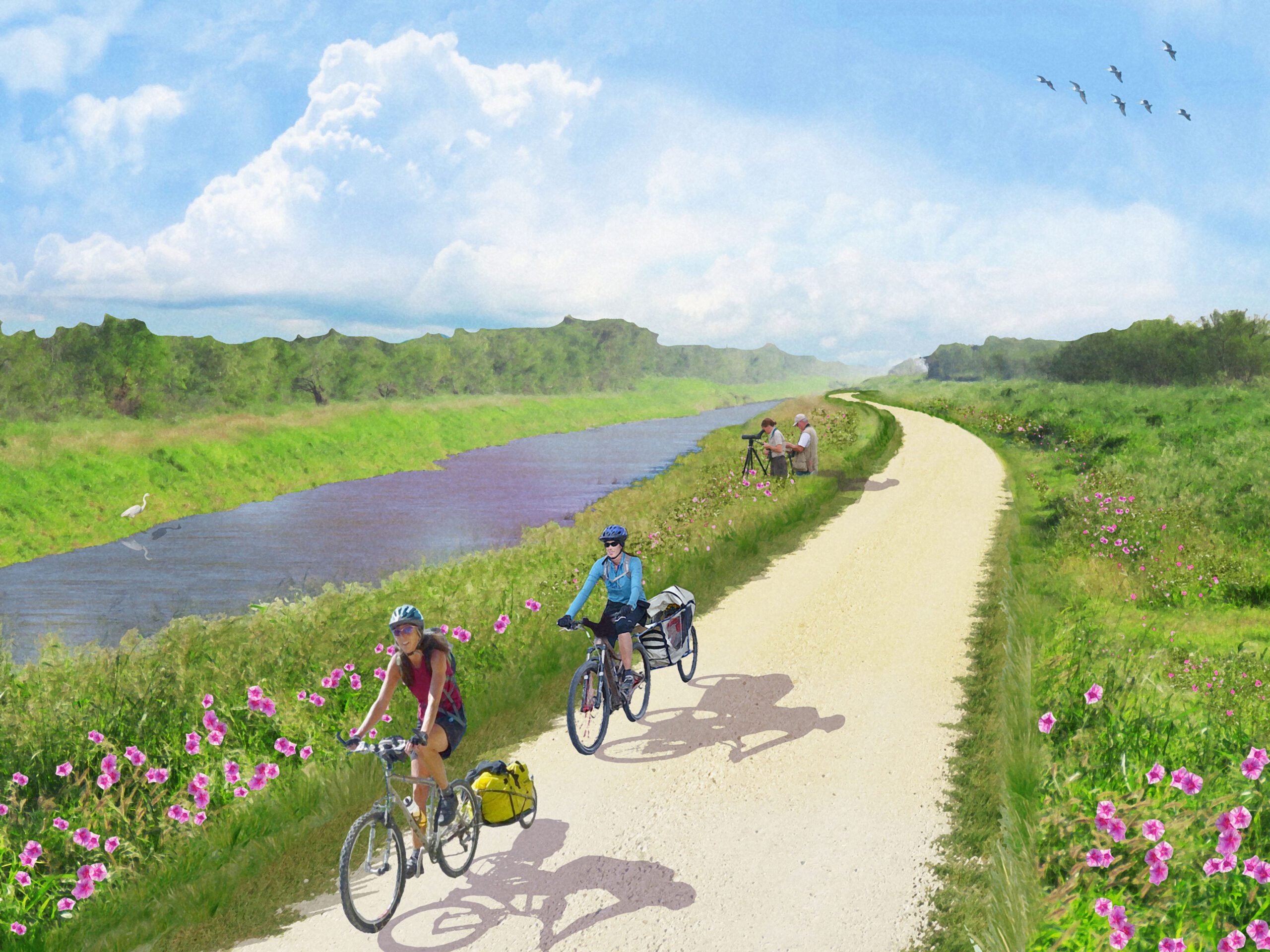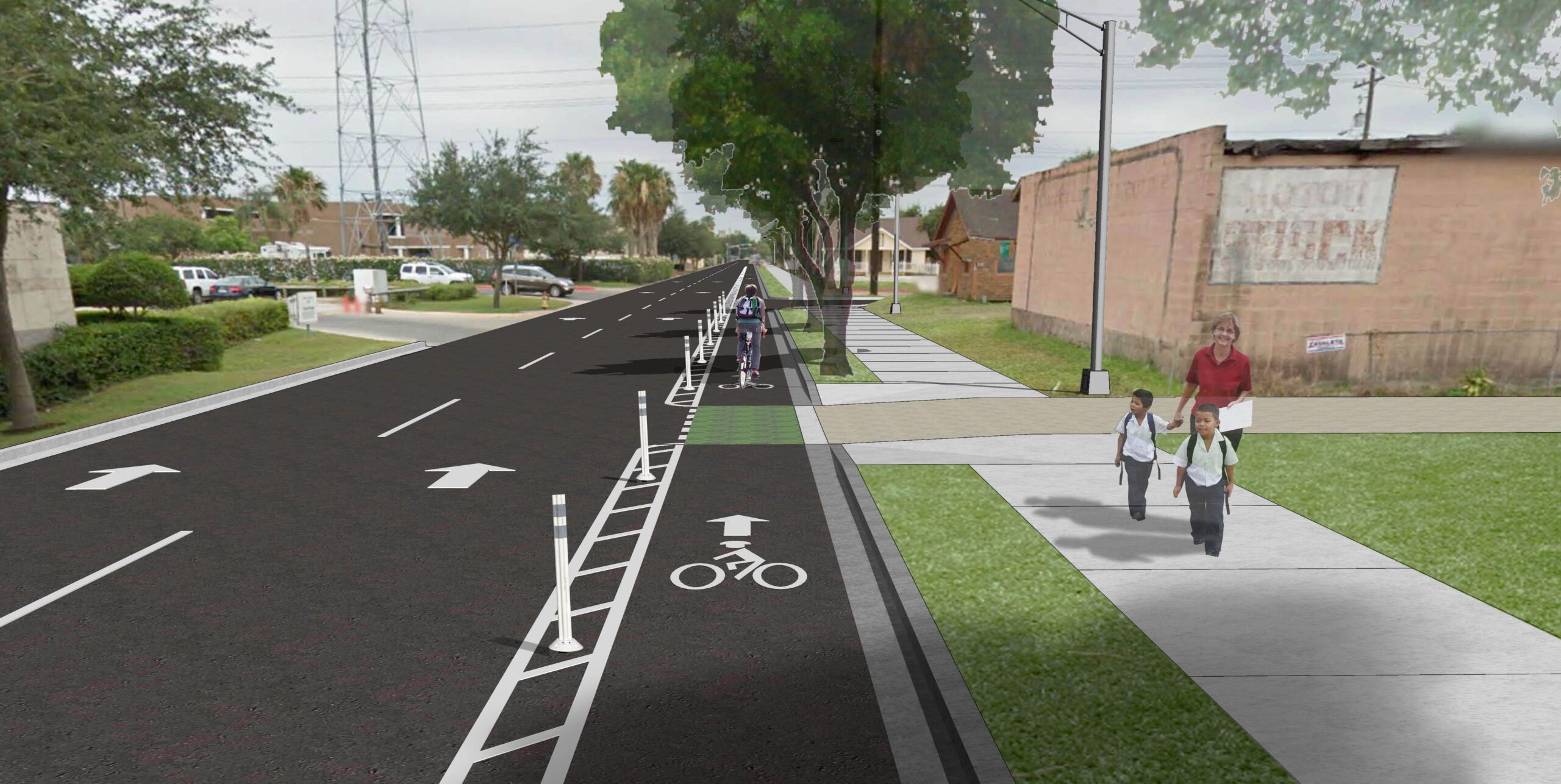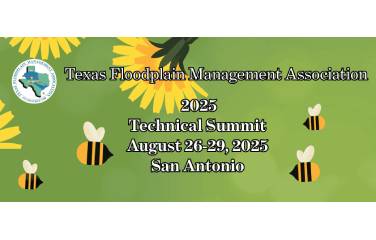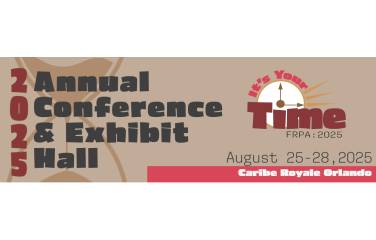When Recreation Becomes Transportation
Even in the South—where the highways are wide, the distances are great, and the summer heat is oppressive—there is a growing demand for facilities that support bicycling and walking. Could it be that we are ready to ride our bikes to the office? Walk to the grocery store? Shun our trucks for pedals or a good pair of walking shoes? Not so fast.
There are many barriers in our communities’ built environments that decrease the feasibility of choosing an “active” mode of transportation such as bicycling or walking. So what’s with all of the trails, sidewalks, bicycle lanes, and other “active transportation” facilities that are popping up in our communities?
Active transportation generally refers to traveling by bicycle or foot. The term implies that the bicycle and pedestrian activity is undertaken for travel—in place of a car, truck, motorcycle, or other motorized transportation. In the planning profession, ideal transportation systems are built around the concept of Complete Streets, which increase the feasibility of choosing active transportation modes for at least some daily or weekly trips. A well-conceived and constructed system of bikeways and pedestrian pathways is viewed by active transportation advocates and progressive planners as a way to reduce traffic congestion and wear and tear on our streets by providing transportation choices separate from cars.
Cities in Cameron County, Texas, are seeking to link existing multiuse trails into a regional network as part of their efforts to develop an “active tourism” economy.
Demand for Expanded Networks
In reality, the built environment in many American communities is not dense enough to substantially accommodate all travel modes. For example, bicycle commuting accounted for only 0.3 percent of all trips in the state of Texas in 2014, according to data from the League of American Bicyclists. As a result, skeptics often view efforts to invest in sidewalks, bicycle lanes, and other active transportation infrastructure as misguided when compared with other local transportation needs. Nonetheless, active transportation networks continue to be planned. The increasing demand for these facilities can be attributed to three main factors:
-
Recreation and Fitness. Surveys conducted by Halff Associates consistently reveal that a majority of people use bicycle and pedestrian pathways for recreation and personal health, rather than commuting. The surveys also consistently affirm community preferences for expanded multiuse trail systems. Meeting these popular recreational and fitness needs often (and gradually) increases public support for investment in not just trails, but also sidewalks and bicycle lanes.
-
Quality of Life. Vibrant and growing communities continue to explore ways in which they can remain attractive to potential employers, residents, and other community investors. It is no longer sufficient to simply offer well-maintained street, water, wastewater, and other essential infrastructure systems. To compete for private investment, cities and counties must actively market assets that reflect a high quality of life such as: a high-performing school system, cultural facilities, natural resources, open spaces, recreational facilities and programs, and a multimodal transportation system that includes transit, bike lanes, sidewalks, and trails.
-
Economics. Many community leaders realize that incremental development of a bicycle and pedestrian network is not a cost-prohibiting factor. Many existing streets with wide motor vehicle travel lanes or shoulders, or which no longer carry high traffic volumes, can be retrofitted by installing simple signage and pavement markings. New sidewalks, bicycle lanes, and multiuse trails can often be constructed as part of the development process. Further, many studies suggest that the proximity of multiuse trails to development has a positive influence on property values.
In some cases, existing streets can be retrofitted or repurposed to accommodate bicycle or walking lanes.
Active Transportation Potential
Over time, community interest has evolved from the development of fixed-park sites to expanded park access via linear trail networks. A nationwide push for providing “Safe Routes to Schools” has run concurrently with these changes in community thinking. Parks and schools serve as clear destination points, and the desire for extensive trail networks that meet transportation needs has grown from the original recreation and fitness emphasis.
As a city’s multiuse trail system grows, it often begins to form the spine of a community-wide active transportation network that provides access between an increasing number of residential areas and community destinations. Other trails, bikeways, and pathways begin to extend from the trail network to the street network as residents demand more convenient access to other points in their community. Active transportation trips of convenience are soon added to the Sunday family ride or morning workout.
A growing awareness in the full potential of active transportation is now gaining popularity. Local active transportation investments for recreation and health are being leveraged for direct economic benefits. Cities and towns are increasingly seeking to weave their active transportation systems together into expansive regional networks that seek to attract the burgeoning “active tourism” market by showcasing a network of cultural, natural, and historical attractions.
Once again, these initiatives result in new bikeway and pathway facilities that are often indirectly intended to provide a local transportation choice. For savvy active transportation advocates, increasing transportation choices through community recreation, health, and economic development objectives is an attractive strategy. Even better, such an approach offers the opportunity to build a true coalition with entrepreneurial—yet frugal—citizens around the development of active transportation choices.
In Texas, Brownsville’s investments in recreational trails have spurred greater community interest in bicycling as a transportation choice.
Multiuse Trails That Meet Transportation Needs
Any basic trail facility must serve incidental community transportation needs to qualify for federal funding leverage. However, trail systems designed to supplement a broader active transportation network should include at least some of the following design elements:
-
Rules of Etiquette. Include simple rules that define user etiquette at all trailheads and at prominent locations along the corridor. At a minimum, address hours of use, maximum speeds, and methods of passing. Supplementary advisory signs such as “Walk right, pass left” along the corridor can remind users of basic expectations in trail use. Pavement markings may be utilized on heavily traveled routes to define bidirectional traffic.
-
Way-Finding Signage. Utilize bicycle route and guidance signage presented within the Manual on Uniform Traffic Control Devices (MUTCD) along the trail corridor. Follow MUTCD standards for the application and placement of signs, but consider appropriate signage modifications where flexibility is permitted. For instance, MUTCD-permitted Bicycle Guide Signs may also incorporate pedestrian symbols to emphasize the trail’s shared-use characteristics.
-
Connectivity Ordinances. Adopt land development regulations that require the reservation of multiuse trail easements or right of way as part of new development. Regulations should also establish the conditions by which connections to existing or planned trails must be provided.
-
Construction Design Standards. Amend local government construction design manuals to include guidelines for shared-use paths. Address surface and subgrade construction, easement and trail surface width, vertical clearance, and cross-slope.
-
On-Street Routes. Include on-street sidepaths where necessary to ensure that multiuse trail networks do not terminate at arbitrary points along the street network. Rather, they extend directly to key destinations at either end.
-
24-Hour Access. Permit 24-hour access to selected trail segments that provide important connections to community destinations. Such access should only be permitted on segments where good lighting and high visibility are present, and there is the potential for frequent evening usage.
Want to know more about active transportation networks? Write to Info-Landscape@Halff.com.





